THE LANDSCAPING SOLUTIONS BLOG
Welcome to our Blog. Inspiration, updates and industry trends from the team at Landscaping Solutions.
REGENERATIVE GARDENING
Landscaping Solutions MD Ben West reminds us of the beneficial impact we can have on a garden’s biodiversity with thoughtful intervention.
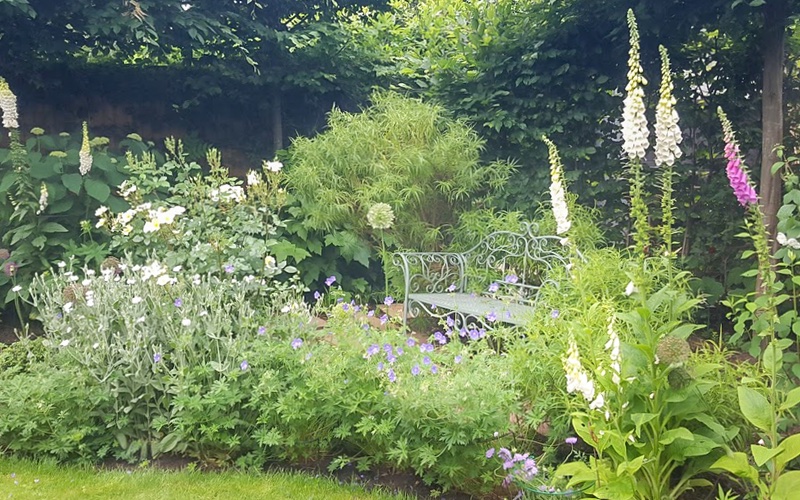
An example of a biodiverse garden by Landscaping Solutions.
Hypericum perforatum, or ‘St John’s Wort’, is a common wildflower used traditionally as a wound herb and more recently as a treatment for depression or a general tonic for lifting the spirits. The plant is named after John the Baptist who is said to have been born six months before Jesus of Nazareth on 24 June and is venerated in the Christian faith as the one who prepared the way for Christ the Redeemer to carry out his work.
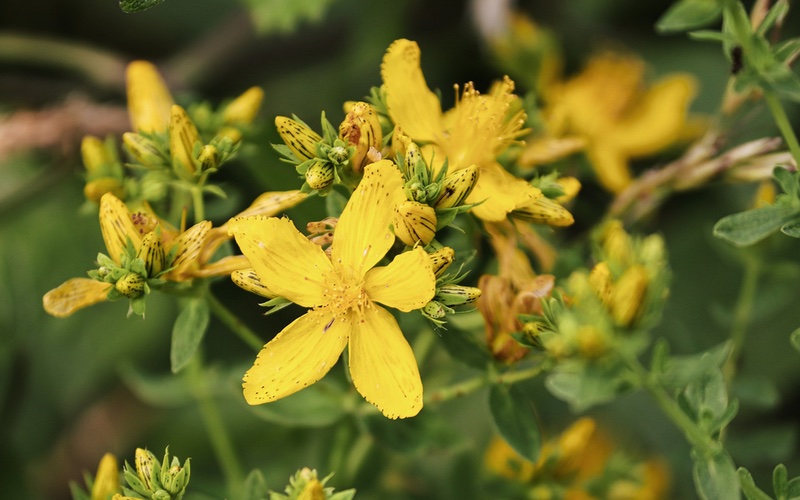
The common wildflower Hypericum perforatum, or ‘St John’s Wort’.
How fitting, then, that on St John’s Day I had the most uplifting and redeeming experience of an otherwise tumultuous year when I tuned in to an online lecture by Fergus Garrett on the subject of biodiversity at Great Dixter House in Sussex. I came away healed, hopeful and with a sense that his vision could prepare the ground for our work as ‘regenerative gardeners’.
Between 2017 and 2019, Fergus commissioned a biodiversity audit of the Dixter estate in order to confirm his hunch that the gardens represented a special place for wildlife and inform his team of how best to manage the land going forward. The audit uncovered a range of interesting findings, the most important, in my opinion, being the discovery that the abundance and variety of life in and around the house and gardens outweighed that of the estate’s hedgerows, meadows, woods and farmland.
The gardens harbour a number of nationally rare and scarce bees, wasps, hoverflies, moths and spiders. One of the ecologists proclaimed the gardens to be one of the most biologically rich sites he had studied in 30 years of surveying. So, what are they doing right at Dixter?
In my last article for the Landscaping Solutions blog, I wrote of the University of Sheffield’s ‘BUGS’ project which studied factors influencing biodiversity in gardens. The BUGS team discovered a number of recurring garden features which increased the quantity and variety of species. All these features are present at Dixter. There is an emphasis on refraining from chemical use and over-zealous mowing. Composting is championed, along with the creation of brash piles and provision of standing dead wood.
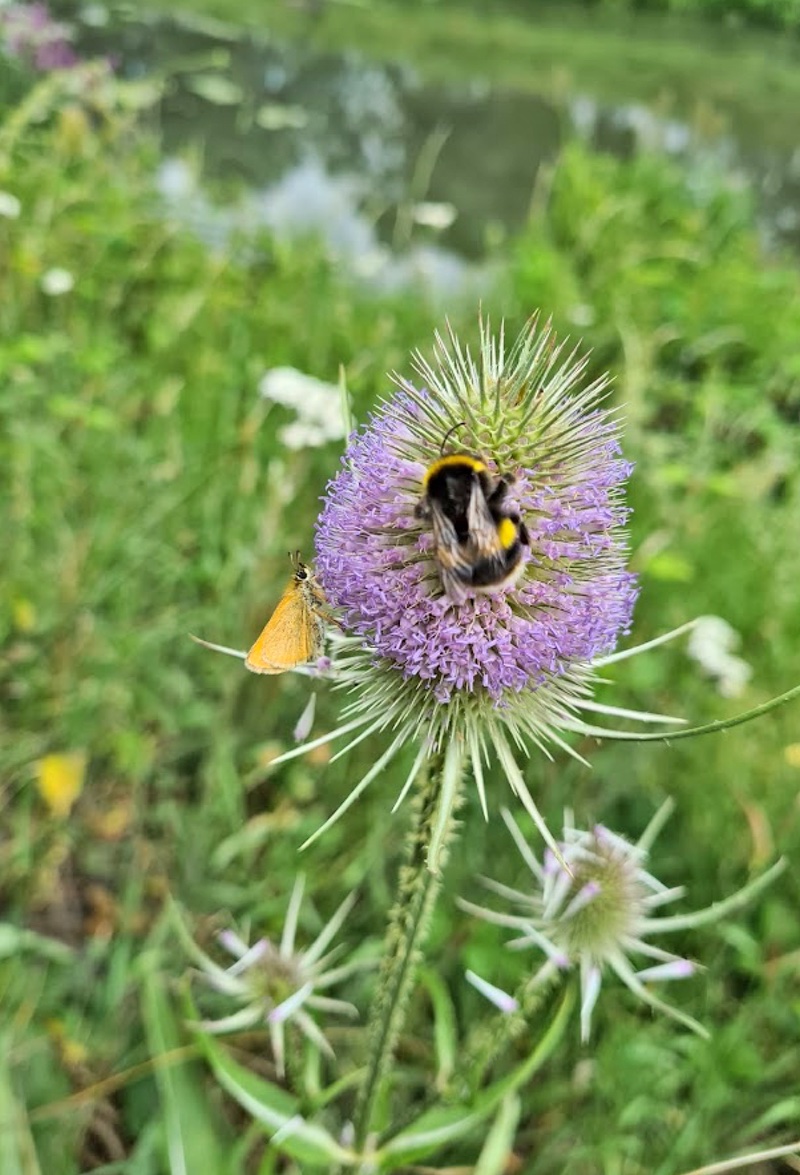
Ponds, water courses and a little untidiness not only add an aesthetic charm but also provide a practical habitat for wildlife.
The garden is famous for its successional planting providing early spring flowering fruit trees, a long-lasting summer mix of natives and exotics and diverse late season pollen and nectar sources. Hard structures have lots of nooks and crannies in which insects, birds and mammals can find shelter and raise young. Ponds and water courses are present and, crucially, there is recognition that ‘untidiness’ adds aesthetic charm as well as practical habitat.
The garden at Dixter is a dynamic and intensely managed landscape in a constant state of change. Man-made change. There is a pervading sense that, for wildlife to thrive, human intervention should be kept to a minimum. The hand of man is generally thought to be a destructive one. However, Dixter highlights humanity’s beneficial influence on the health of the planet and how thoughtful horticulture has a key role in improving biodiversity.
It’s easy to dismiss mankind as a plague on the face of the planet, but examples like Dixter remind us of the positive nature of our position in the web of life and how important gardens and gardeners are to how the picture might pan out. Which impressions will we choose to leave on the canvas of the twenty-first century? The current background is a Turneresque tempest. Will we overlay this with a depiction of the gates of hell or the Garden of Eden? The choice is ours.
Thanks and gratitude to Helen Gazeley for directing me toward the Dixter lecture. Watch it yourself here: www.vimeo.com/ondemand/biodiversitygreatdixter
A WILD VARIETY
Landscaping Solutions MD Ben West explains why only using native plants is not necessarily the best option.
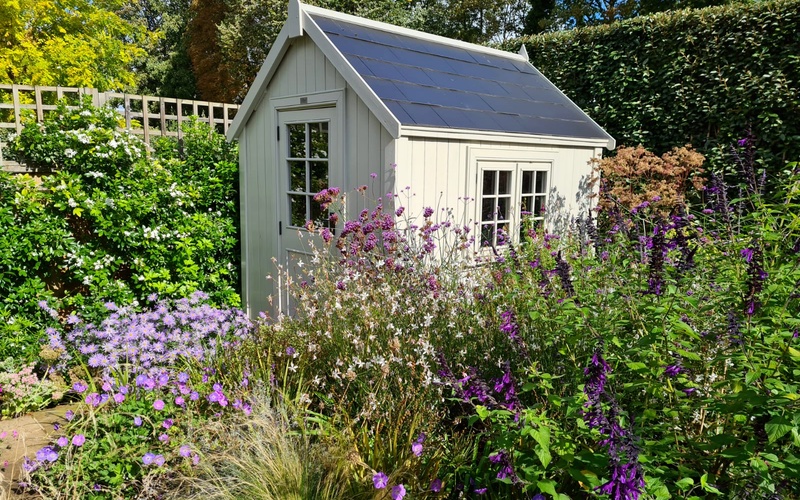
Diverse late Summer herbaceous perennials in a garden built and maintained by Landscaping Solutions in Twickenham, South West London.
In one of our recent blog articles, I extolled the virtues of garden ‘weeds’ in light of their potential to re-connect us with nature; I proposed a move away from our entrenched revulsion toward a position of reverence. As much as I love native wildflowers and have learned much about myself and the wider world from a close relationship with them (not to mention benefitted immeasurably from their medicinal and culinary properties), I don’t want to give the impression I’m an advocate of allowing our plots to go completely to seed. Rather, I’m looking to promote a more laissez faire attitude that permits weeds be cherished rather than demonised in order to improve the biodiversity of our gardens, and our nation, as a consequence.
The key component here is the notion of surrender, of letting go of deeply held opinions when faced with evidence that suggests they might be damaging or just simply unfounded. This is a lesson we can all take on board whatever our feelings on what constitutes a successful garden.
For instance, proponents of wildlife gardening have traditionally espoused using only ‘native’ plants. However, research by Dr. Ken Thompson and his colleagues at the University of Sheffield suggests otherwise. Ken is a plant ecologist who was part of the ‘Biodiversity in Urban Gardens’ or ‘BUGS’ project which investigated the significance of urban gardens in Sheffield for natural diversity back in 2000. Their findings blew apart the doctrine that held ‘native’ superior to ‘alien’ plants in terms of their ability to support wildlife. Ken and the team found that, so long as they delivered the goods in terms of providing food, shelter and a place to raise young, most wildlife didn’t much care for the origins of any particular plant. In fact, more importance rested on schemes that were diverse and varied in flower type and shape, rich in nectar and planted in swathes of the same species. Gardens providing successional planting and extended individual flowering periods also displayed increased biodiversity. In addition, pollinating insects showed a preference for plants closer to the ancestral species rather than highly modified versions such as double flowered varieties.
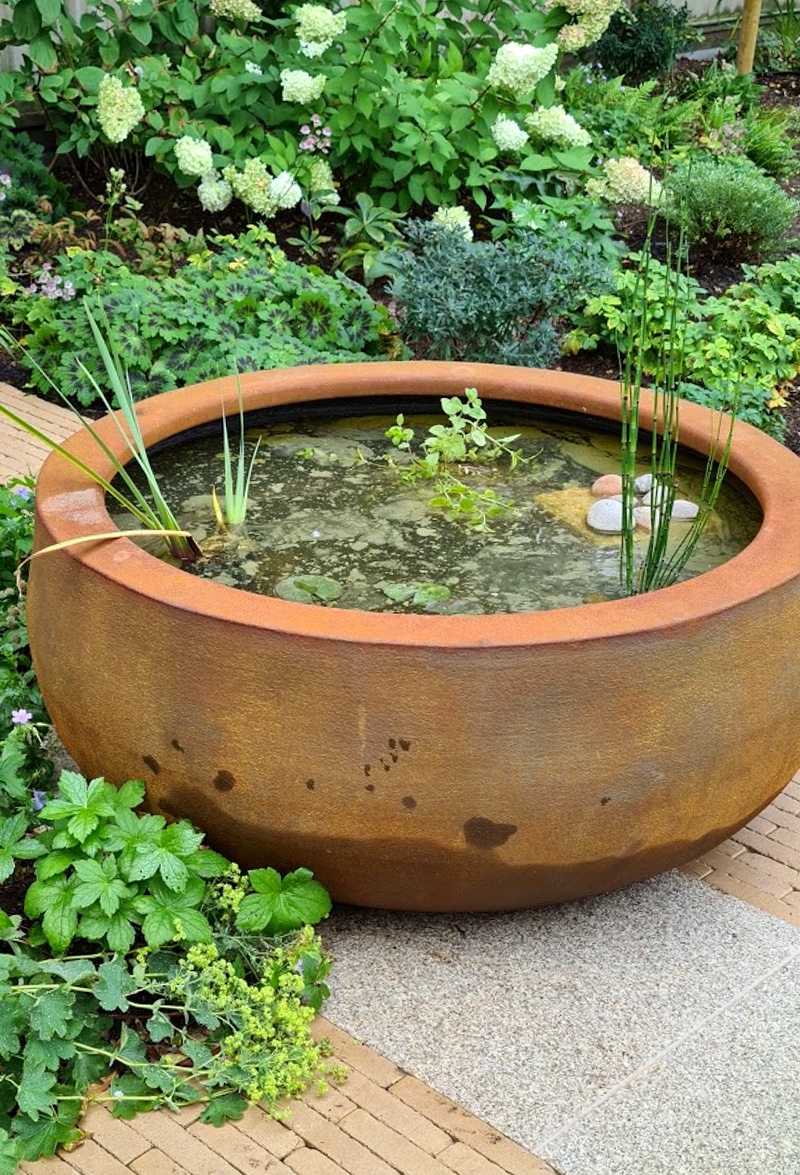
Ponds and water features are just one way of increasing biodiversity in a garden.
The BUGS project also discovered a list of other features those wishing to increase biodiversity should include in their gardens, namely trees, ponds, compost heaps, walls, hedges and, importantly, combinations of the above to provide variation and diversity. The project also stipulated avoiding the following elements: closely mown grass, extensive areas of hard surfacing, the use of chemicals and, last but not least, excessive tidiness.
It has always been my anecdotal experience that nature loves a bit of ordered chaos and this was supported by the BUGS project findings. Think of the grass snake in the compost heap, the whitethroat nest in the bramble patch or the pile of cinnabar moth caterpillars on that scrap of ragwort you forgot to weed out. This is the very essence of wildlife gardening and affirms why a little bit of ‘conscious neglect’ goes a long way. It is important not to understate the significance of loosening up our attitudes. If we are to redress the imbalance that 50+ years of over-zealous gardening has instilled, then we must stop treating gardens like we do the rest of our uptight, downtrodden and increasingly straight-jacketed lives, whichever side of the fence we are on.
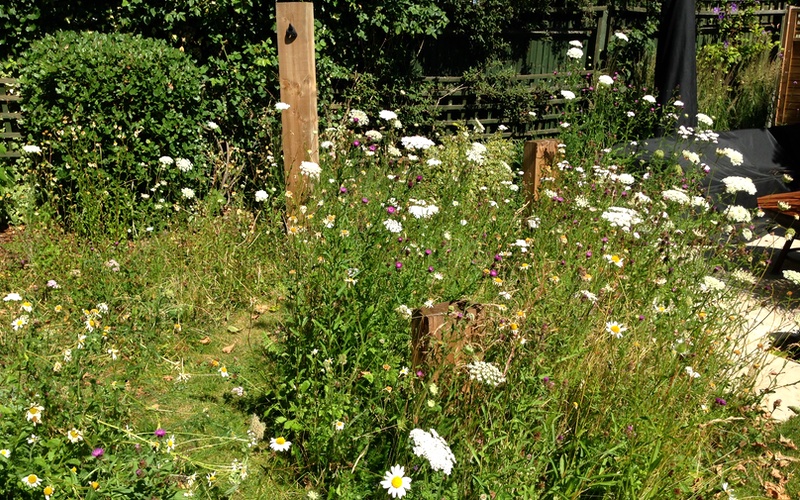
An example of ordered chaos in a garden built and maintained by Landscaping Solutions.
Those wishing to gain a sharper understanding of what wildlife gardening is really all about should read the illuminating ‘No Nettles Required’ by Ken Thompson.
Feel free to drop us a line with your thoughts and feedback on this article at info@landscapingsolutionsltd.co.uk.
THE SUSTAINABLE AESTHETIC
In late 2019 we collaborated with Jilayne Rickards on a small urban garden she designed for a great client in North London. Jilayne christened the scheme ‘The Urban Retreat’.
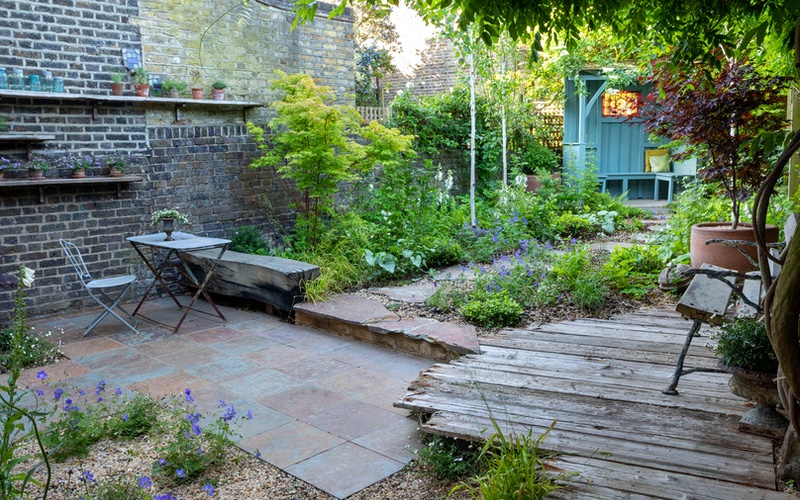
The Urban Retreat in North London, designed by Jilayne Rickards and built by Landscaping Solutions.
Jilayne’s vision was for the garden to be both beautiful and sustainable. In December last year we discovered the garden had picked up four British Association of Landscape Industries awards. The most satisfying of these for us was the award for best use of recycled and reclaimed materials. The recognition this garden received from BALI and the interest and acclaim it has garnered from the wider public offers hope for what we call ‘The sustainable aesthetic’. The more media coverage gardens of this type obtain the more they will come to be considered desirable by the general public and the more likely their guiding ethos will become mainstream thought.
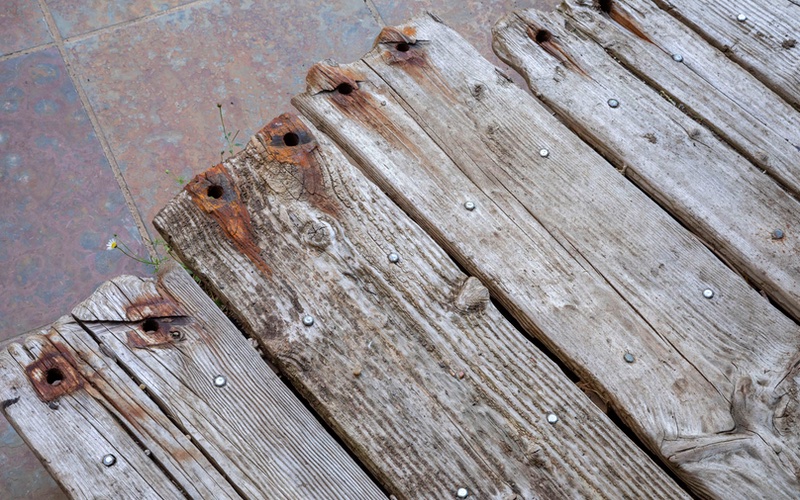
Reclaimed Douglas Fir decking, one of the many recycled and reclaimed materials used throughout the garden.
What is the ethos of the sustainable aesthetic and why is it important? The sustainable garden weathers well in the British climate, blends in with its surroundings, accommodates and encourages interaction with wildlife and does not damage the environment in its creation. It follows a number of principles;
Protect and nurture the holy trinity of soil, plants and insects. Do this and good things will follow. In ‘The Urban Retreat’ all soil was kept on site.
Reduce waste. In this garden all existing pots and planters were recycled along with the brick work. Paving sub-base materials were re-used where appropriate or sent for off-site recycling with any green waste produced. Energetic waste can also be reduced by designing closed systems and features that have multiple benefits. For example, planting Comfrey for its aesthetic appeal, ability to attract and feed insects, provision of composting material and medicinal applications.
We can further reduce waste by working with the existing lay of the land, soil type, microclimate, ‘hard’ and ‘soft’ vernacular, moisture levels, ‘habitat’ type, etc. The existing garden had a woodland edge feel and Jilayne used this to inform her plant choices. Woodland edge gardens are cooling and relaxing in the heat of a city summer.
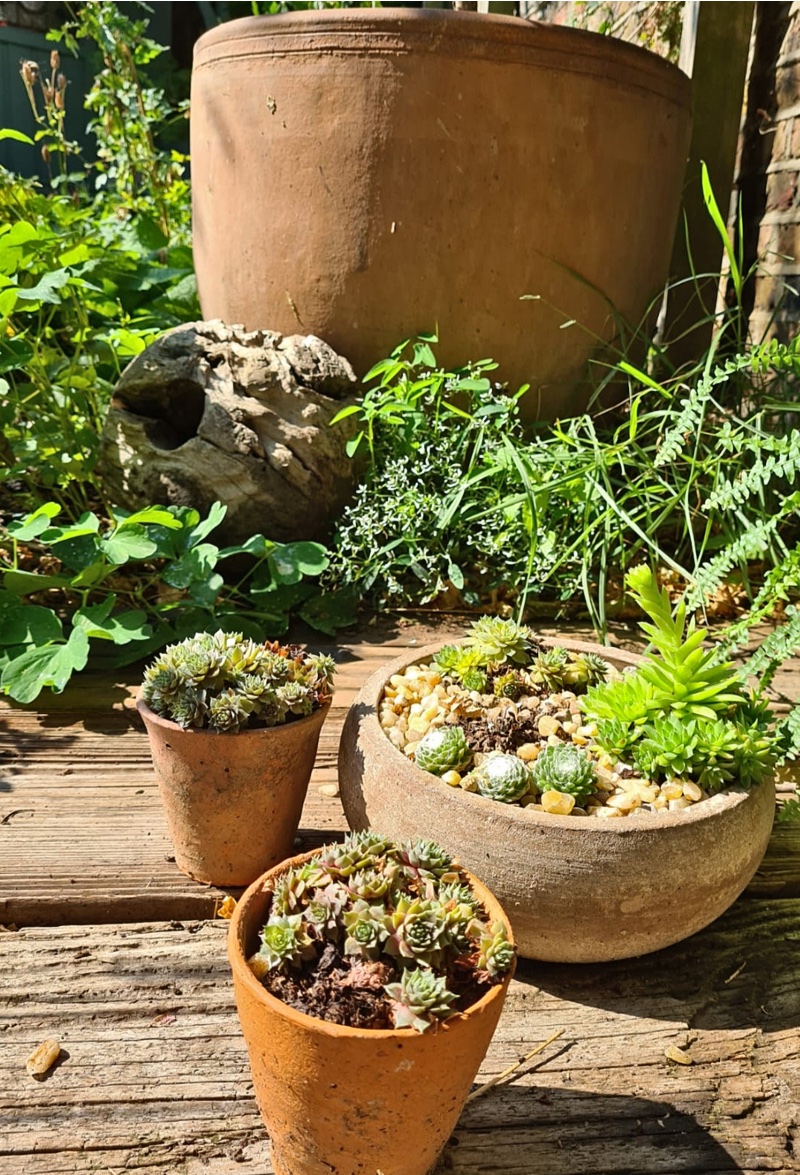
Existing pots and planters were recycled and wildlife friendly planting was retained.
Useful, wildlife friendly planting was retained and any unwanted plants were donated to other gardeners. A mature Elder was a prominent existing feature. What plant can better connect us to the environment and other lifeforms? In winter it looks a wreck and we wonder will it manage to limp on through to spring? But what a change once the sap starts to rise. The leaves come on early, connecting us to the cycle of re-birth out of decay. The summer flowers are an insect magnet and can be made in to refreshing drinks. The autumn berries feed birds and small mammals whilst boosting our immune systems through winter when processed in to medicinal food and drink. Dried out Elder canes are also the best material for the hand drill-one of the first ways our ancestors kindled fire. Try it yourself to fully appreciate their achievements! Plants of this kind re-connect us with our history and birthright and, in doing so, help dispel the illusion that we are somehow ‘outside’ of nature. Through constant exposure to the damaging aspects of our existence we have grown to believe degradation is our hallmark. Gardens are the one of the arenas in which we can reassert the positive elements of human intervention and perhaps see our purpose on this planet.
Specify plants and hardscape that don’t need mollycoddling. Opt for resilient plants and stone and timber types that don’t need constant sealing or cleaning. Reclaimed materials achieve this end and also tick the sustainability box- they have not been newly created and therefore no further finite resources have been consumed. In terms of timber, we used reclaimed Douglas Fir decking and shelving and reclaimed Oak for the seating block/retaining wall in this garden. Reclaimed slate and granite was used for the paving. Jilayne and the client went shopping in local markets for the second hand furniture, fixtures and fittings. All the reclaimed materials were of British provenance. When reclaimed wood cannot be used specify locally sourced FSC-certified timber from trusted suppliers.

Reclaimed timber, slate and granite were used throughout the garden as well as second hand furniture, fixtures and fittings.
Permeable surfaces allow rain water to percolate back in to the ground and to that end gravel was used extensively in this garden. More generally, look to make surfaces more porous with the aim of increasing biodiversity. Block and brick retaining walls could be replaced with gabions which allow unwanted existing materials such as paving and walling to be used as in-fill.
Sustainable gardens aim to be as ‘soft’ as possible. Planting should be diverse, successional and nectar-rich. Utilise a range of trees, shrubs, climbers, grasses and bulbs to provide food and shelter for wildlife. Don’t forget; attractiveness to humans is of equal importance if the garden is to be considered a success by the client!
Go easy on garden lighting and chemical weed and pest control. Neither were used in this scheme.
However, the garden wasn’t a perfect example of sustainability. There were a number of areas where our activities were damaging;
- Cement and adhesives were used. Both material have a high environmental impact.
- Fossil fuels were consumed and pollutants produced in travelling to and from site.
- Space restrictions dictated all deliveries were bagged. To reduce waste specify loose deliveries wherever possible.
- Gravel extraction degrades wildlife habitat.
How can we improve? At Landscaping Solutions we are committed to continual professional development through seminars, courses, workshops and personal study. Integration of environmental assessments to our CDM process helps us think about how we can reduce our impact and guides our landscape design decisions and installation techniques. This is a great tool but can only take us so far due to the fact that much of the raw information is based on intuition. There is a need to develop an industry accepted framework to help us better understand the relative impact of various materials and practices. For instance, we might assume artificial turf to be more impactful than paving but in some instances artificial turf allows the ground to ‘breath’ more than paving. Leave artificial turf to its own devices and it develops into ‘habitat’ much quicker than paving, rapidly hosting an array of plant and invertebrate life. However, can it be recycled satisfactorily? And which of these is most environmentally impactful; quarried British Yorkstone or Italian porcelain? What about quarried Indian sandstone v Italian porcelain? Or Indian sandstone v Indian porcelain. Yorkstone v Portland Stone? Portland stone from open cast extraction v undersea deposits? These are complicated questions.
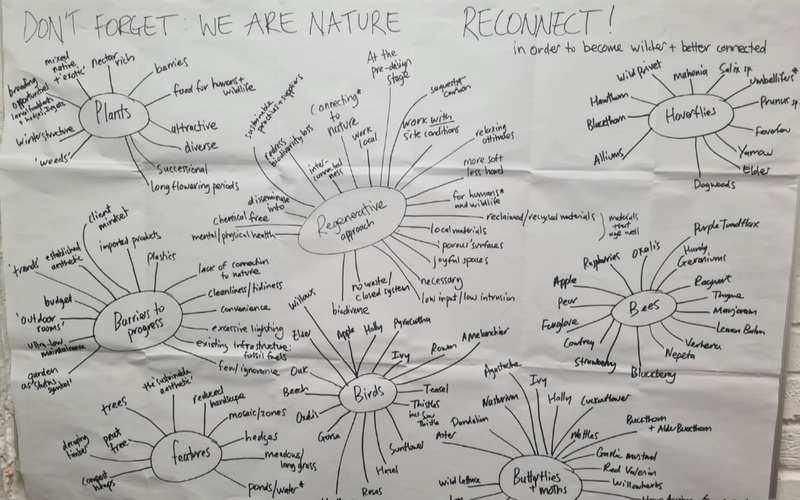
Regular brainstorming sessions helped guide our design decisions and installation techniques.
Good reliable information will enable us to compile a database of suppliers employing sustainable practices. For ‘The Urban Retreat’ we used Ashwells Timber and CED Stone.
Responsive clients might be encouraged to engage with food production be it wild or cultivated and on whatever scale possible. This takes the pressure off the industrial agricultural system, promotes personal resilience, self-sufficiency, understanding of our role in the ecosystem, empathy with other life forms and mental and physical health. Studies have shown low-input vegetable and fruit allotments to be the most biodiverse land use in the country. They can be further improved by providing a body of water and adding on-site composting facilities.
One last piece of advice; don’t forget to have fun!
REDISCOVERING MOTHER NATURE
Landscaping Solutions MD Ben West explains why we need to get back in touch with nature and that compromise is key.
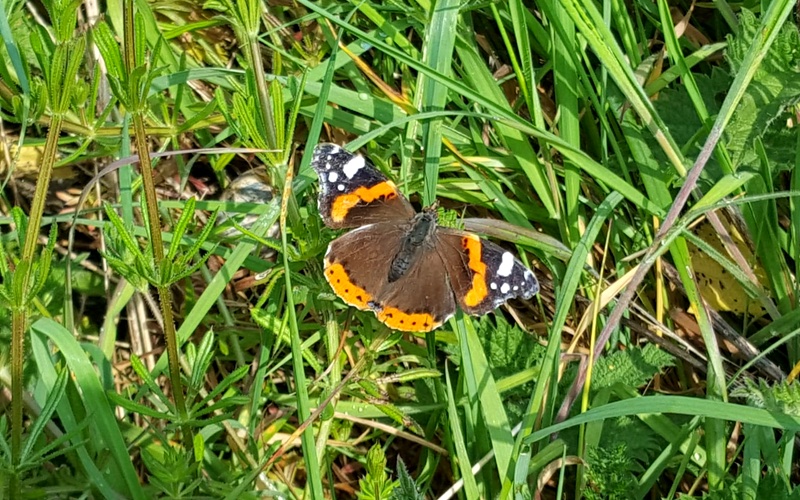
In last months article I focused mainly on the theoretical and practical problems we face in our relationship with the environment. If we are to continue to pursue the goal of ‘economic growth’, this term must come to mean something very different than hitherto. Going forward, all our actions must be scrutinised through the lens of sustainability or regeneration. Our current nescience in this area stems from our conceptual disconnect from nature. I stress ‘conceptual’ because it is all in the mind; literal disconnect from nature is impossible, for what are we but natural through and through? We have lost sight of this truth and therein lies the problem.
Lifestyles and schooling have blinded us to nature and our place in it. Worse still, many of us are filled with fear of plants, insects, fungi and the landscapes they inhabit. Those blind to nature have no incentive to love and nurture it. When we fall out of love, indifference and neglect set in. When we fall out of love with nature, we neglect ourselves.
COVID-19 can rekindle the flame. Nature is courting us again. She has asked us to slow down so that we might renew our acquaintance. The sun is shining, the birds are singing and there’s blossom on the vine. She is giving us another chance to remember who she is and how good we are together. Maybe we could give it another shot? Let’s allow ourselves to fall under her spell once more. Let’s reaffirm our vows, and this time, let’s honour them. We would do well to remember that hell hath no fury like a woman scorned. If we fall back into our gallivanting, will her benevolence endure?
Successful relationships are built on compromise. For this relationship to be more than just a fleeting affair we need to meet her halfway. We need to surrender the conceit of the world as dead matter at our disposal and dismantle our dominator culture in order to learn lessons from life forms far older than us that have evolved to live harmoniously with nature; plants, for instance. They can be the great levellers. Let them be our teachers and the garden our classroom - or more appropriately our forum, for this is a conversation, an exchange of ideas amongst equals.
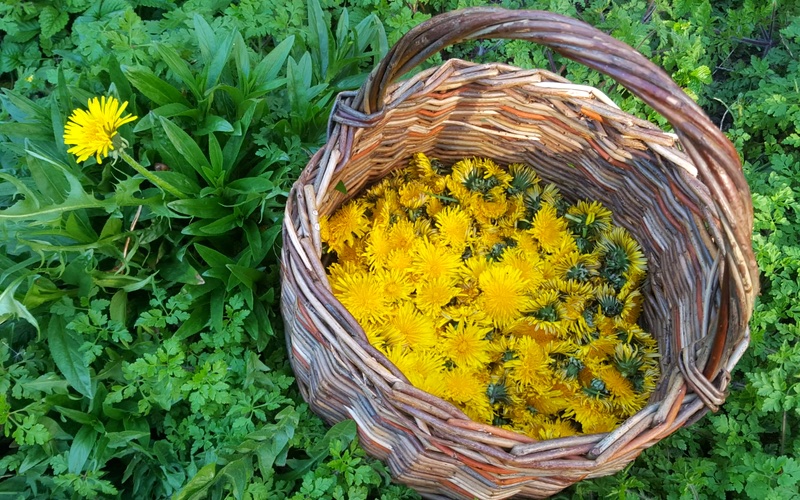
All gardens have something in common whether we like it or not - weeds. I’ve written previously of the biodiversity benefits of allowing weeds to grow. What if I told you consuming weeds can also help us remember who we are? As I write I see before me a host of garden weeds; dandelion, herb robert, nipplewort, plantain, sow thistle, sorrel, ramsons, goosefoot, cleavers, bittercress, burdock. I could go on. All have long nourished and healed us. The rediscovery of a forgotten world of varied flavours and textures, a world beyond the restricted palette of supermarket fruit and veg, is liberating and empowering. It’s also an act of defiance; we are connected once more to our ancestry and environment on a visceral level. Food and medicine are not only found upon shelves, they are products of the feral earth. The health benefits are myriad, both in the inherent nutritional value of the wild foodstuffs and the healing communion with nature. Thousands of years of evolution cannot be quashed in a handful of generations. This stuff is deep within us. Most describe this kind of reconnection as a ‘coming home’.
Weeds in ‘wild’ gardens expose us to a more intimate, egalitarian, interconnected understanding of nature, and thereby of ourselves. A great deal is at stake if we do not regain our capacity to converse with her. Small steps shall set us on our way.
Landscaping Solutions team of talented garden designers and craftspeople are passionate about creating and managing ecological, sustainable and resilient gardens fit for the 21st century. Get in touch to get the ball rolling on your project in 2021.